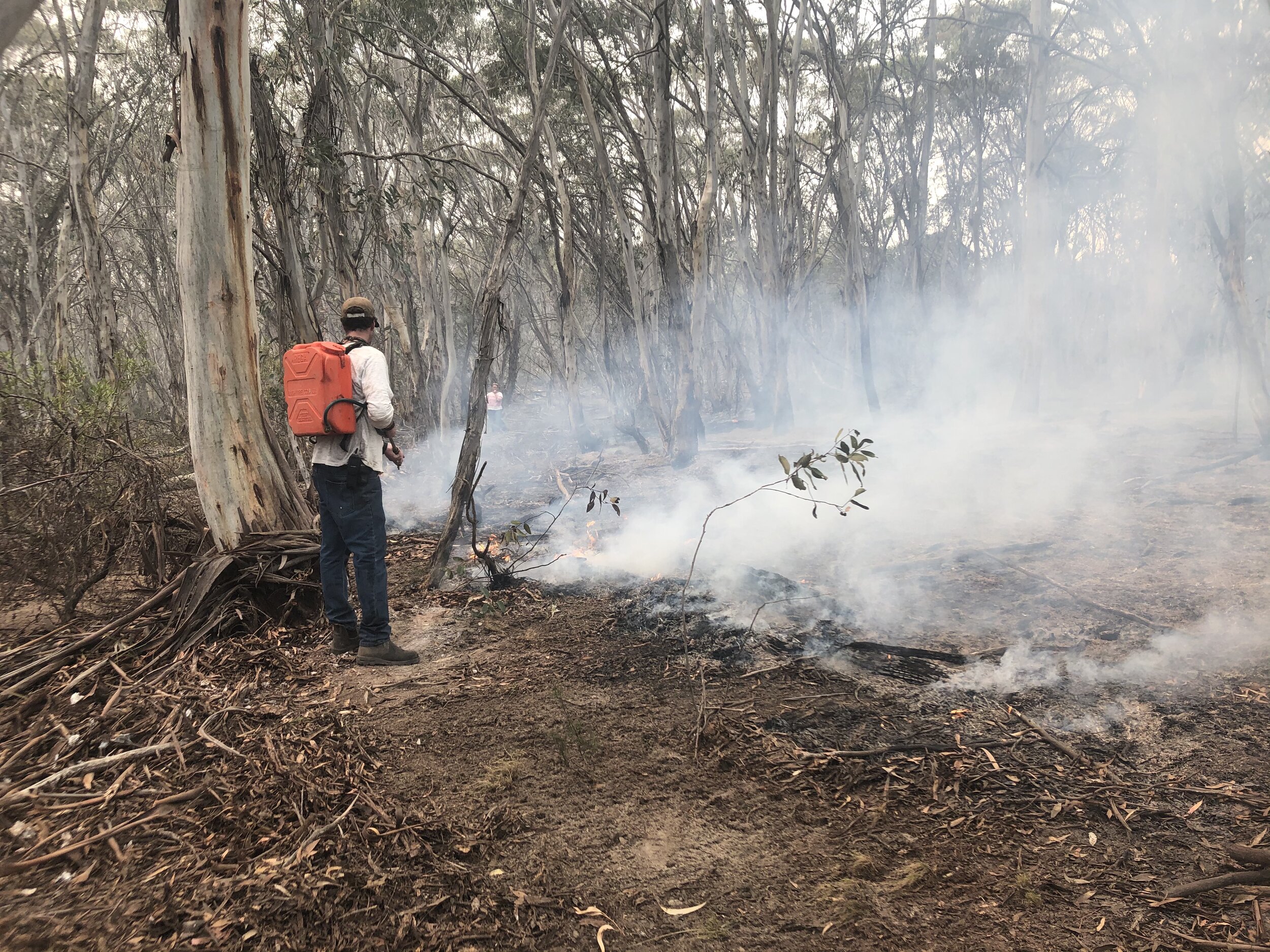
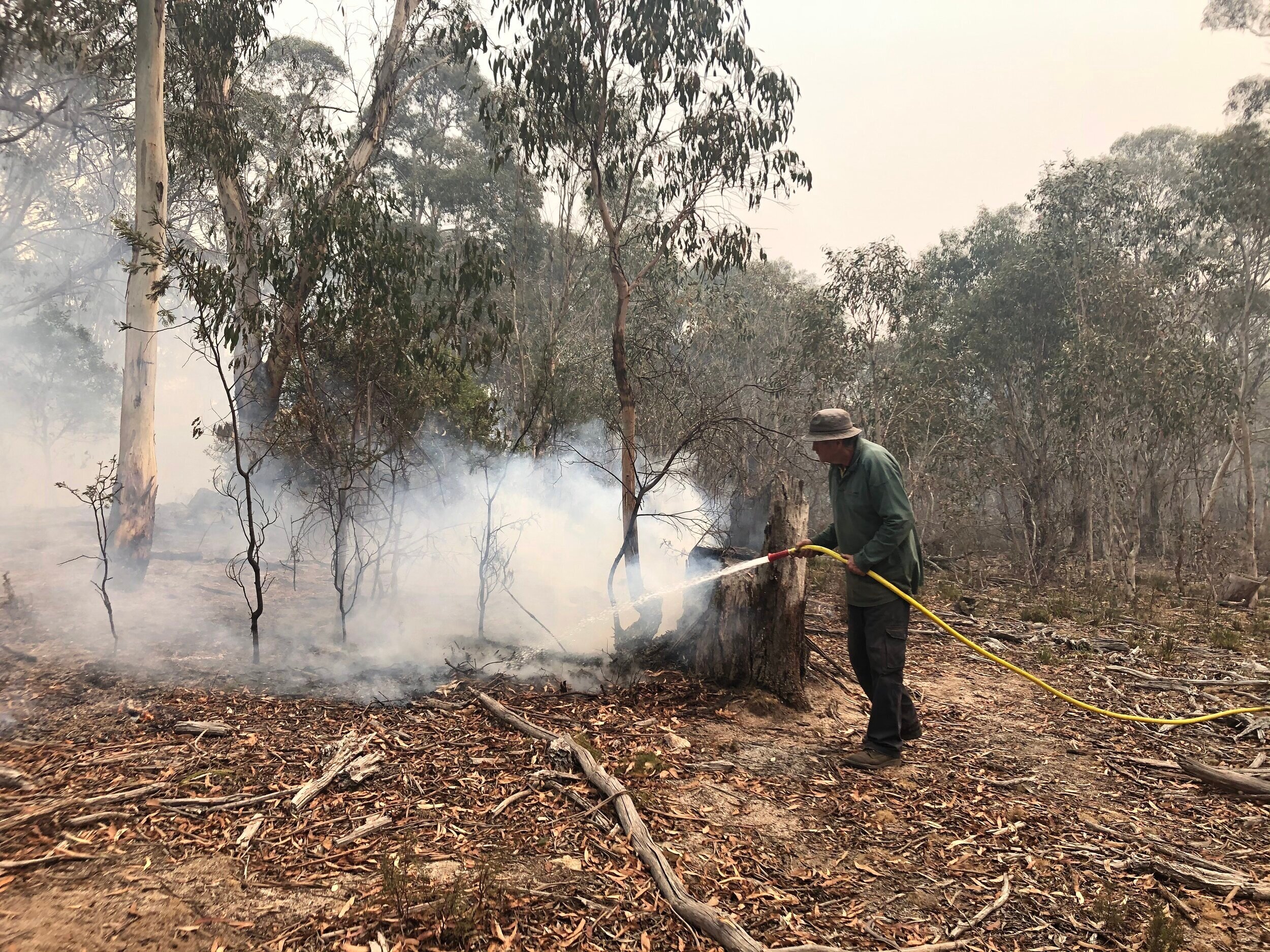
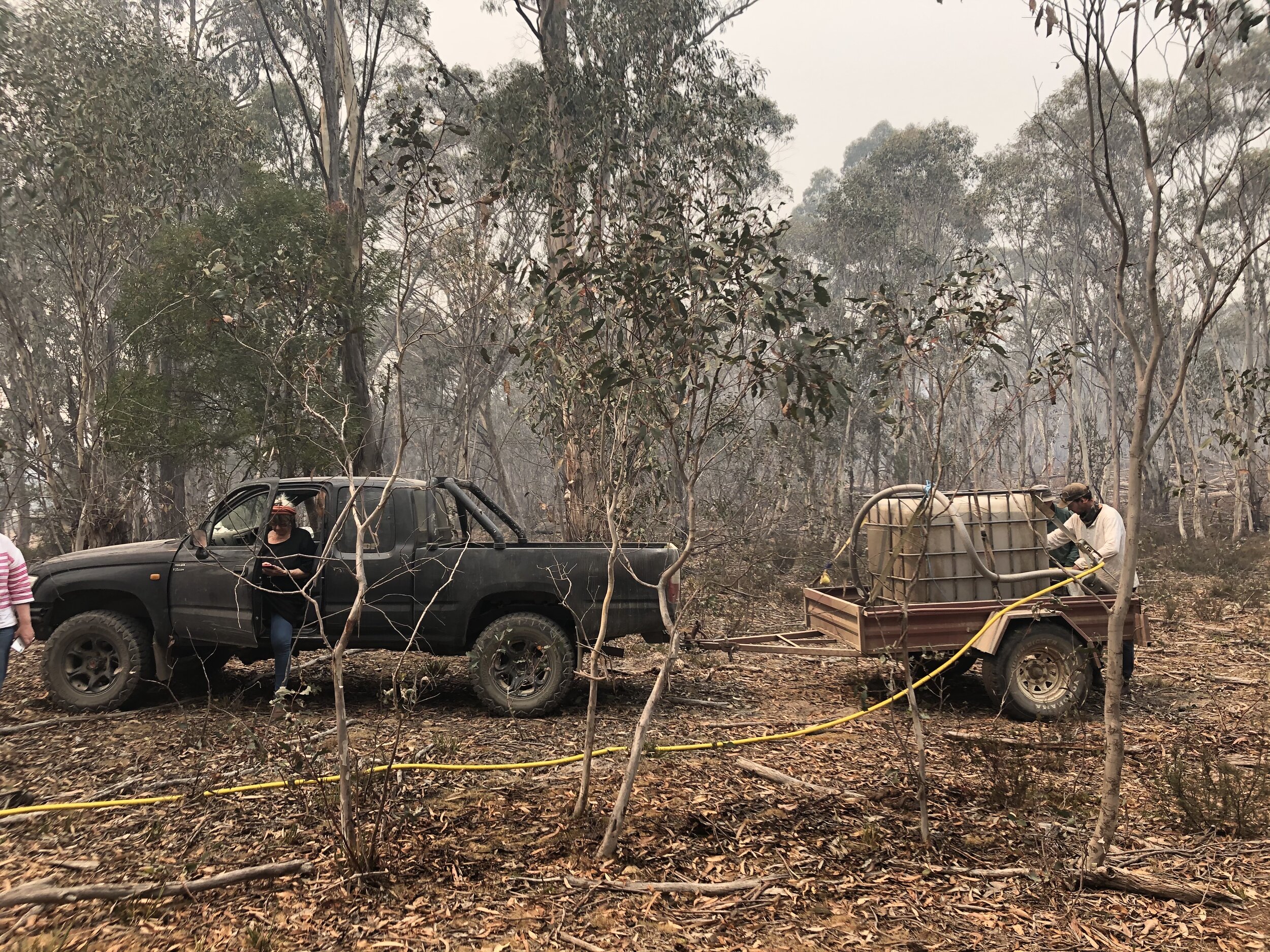
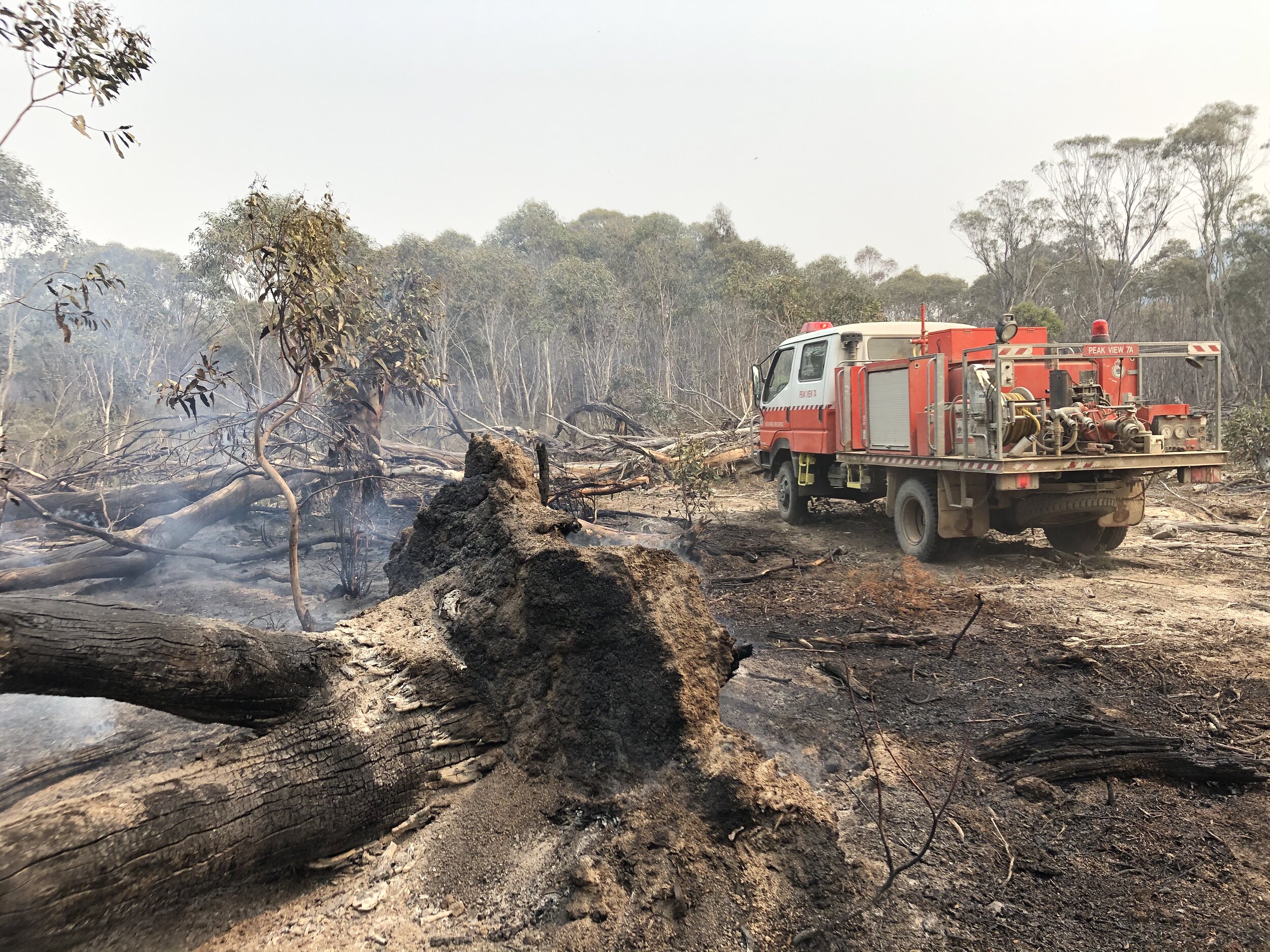
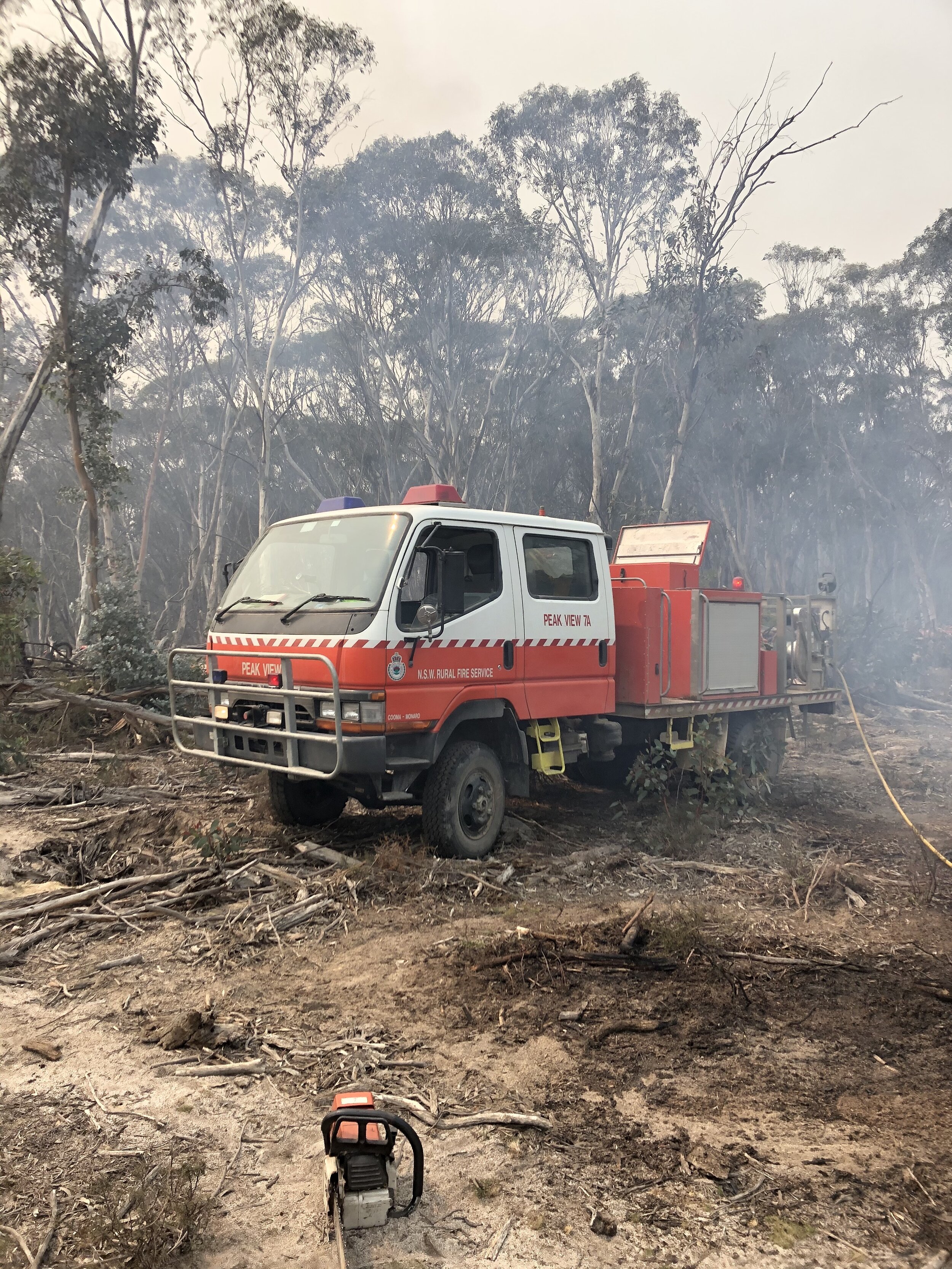

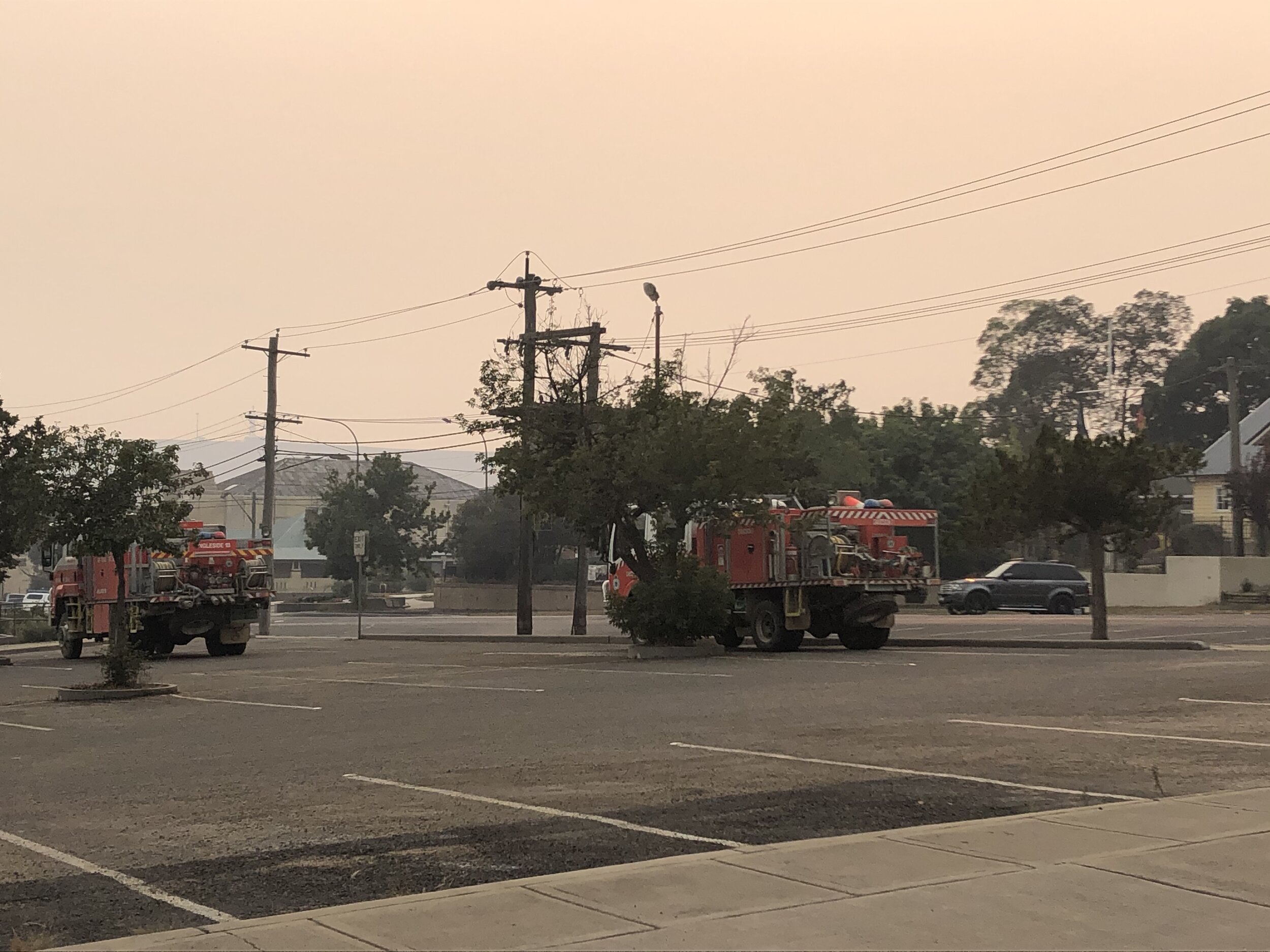
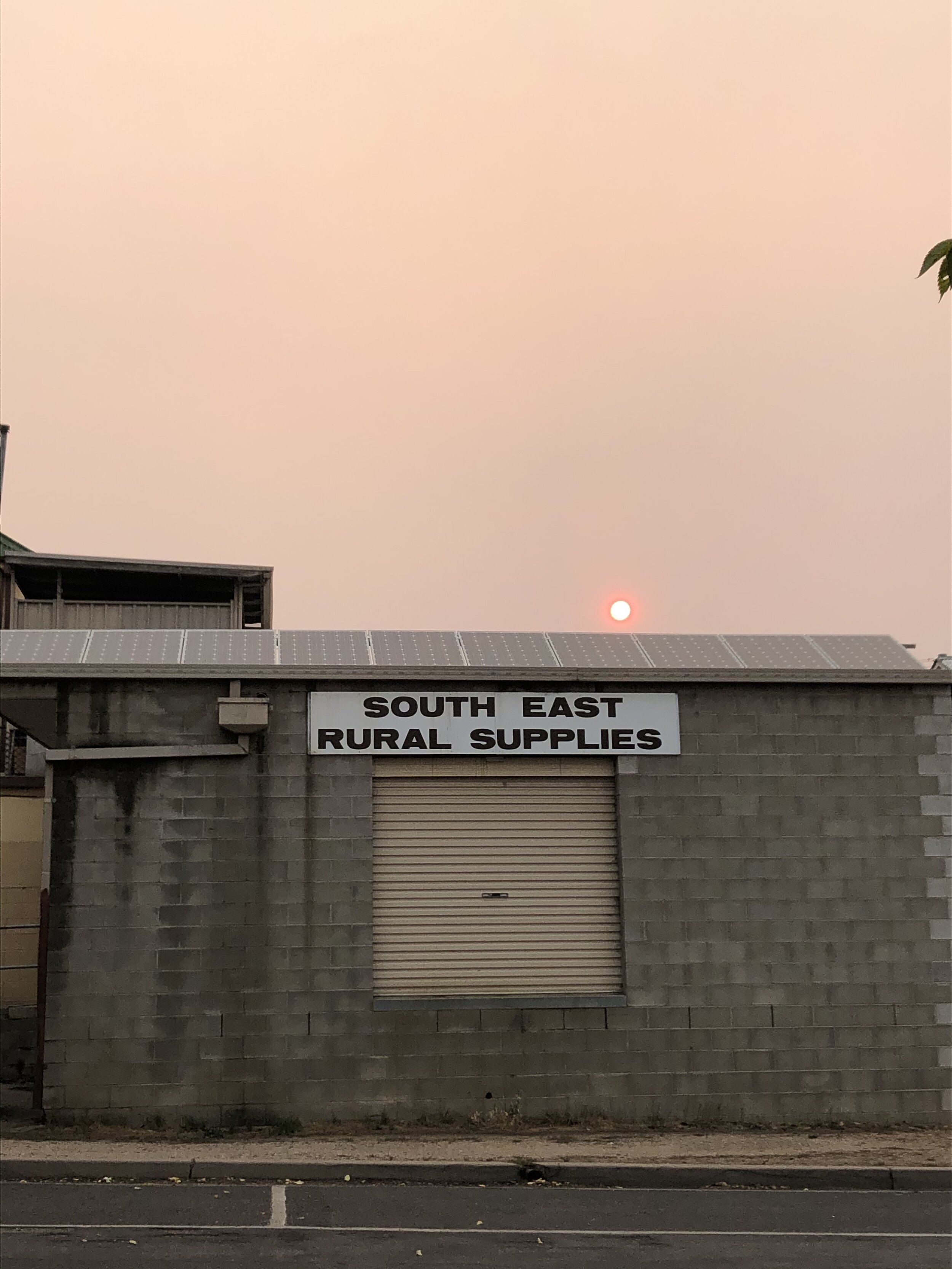
BY YASMIN ANDREWS ’22
The Australian bushfire season started in September 2019 in New South Wales and has since damaged 46 million acres of land. The fires range in size from small isolated flames to mega-blazes. On Jan. 11, two fires met and combined near the snowy mountains, for example.
These fires are being spread by strong winds, which blow embers through trees and flames through grasses and bushes. Some fires are due to out of control back burning efforts, but most fires are occurring due to the naturally dry conditions of the country, which has been amplified by drought.
Watching the fires sweep across the country my family called home was devastating. Right as the destruction became mainstream news in the states, I boarded the plane home.
The fires in Mallacoota, Victoria pushed townspeople to seek refuge on beaches on New Year’s Eve due to the fires’ destructive nature. Mallacoota is a relatively isolated town on the coast of Victoria and a popular destination for tourists during the summer. The fires are damaging the Australian tourist industry, not only due to areas directly impacted, but through misinformation as well.
One popular online image is a map of all areas impacted by fire, made by the artist Anthony Hearsey — notable for being retweeted by Rihanna on Jan. 6. The map is a composite of a months’ worth of satellite data of the fire locations, and according to Hearsey’s Instagram, “The scale is a little exaggerated due to the render’s glow.”
Other maps that have been spread online include abnormal heat levels picked up by satellite. These maps may include the heat being reflected off of the roofs of industrial buildings according to the website MyFire- Watch, which is run by the Australian government.
Not all of the maps are so misleading. Many people have relied on the map managed by the New South Rural Fire Services which updates every 10 minutes. My mother and I used this map while waiting to learn if we would be able to travel to Badja to see my mother’s godmother, Helen, and her family. There was daily back and forth between them, discussing the conditions and potential travel plans.
These maps, in conjunction with issued travel warnings, have lead to a decline in both domestic and inter- national travel at the height of the tourism season.
This is devastating coastal communities, where residents make a bulk of their annual income from the seasonal influx of tourists. While we helped friends pack for an upcoming move, they told us about a friend of theirs who owned a bike rental shop in an impacted community. The shop would normally would pull in $4,000-$5,000 a week during the high season. However, in the wake of the fires, one week’s revenue dropped to around 20 dollars.
Besides tourism, other sectors that are being hit hard including the timber and farming industries. After the recent fires on Kangaroo Island, the company Kangaroo Island Timber Plantation reported that 90 percent of its timber had been lost.
In the farming sector, the loss of property and live- stock due to the fires, as well as the lack of food and water in affected areas have left farms and ranches struggling and waning hope. With hay sheds burned and roads closed, cattle and other farm animals have been left starving in paddocks. Many farmers have turned to the emotional hardship of shooting livestock which are suffering from burns and poor health.
Efforts have been made to help livestock specifically by local communities. For instance, George Walters, a farmer in Cooma, has raised over AUS$60,000 to deliver food and water to impacted farms. In his last update on Jan. 9, Walters reported that there would be 20 trailer trucks worth of hay to be delivered to Cooma and then distributed to affected farms.
On the fourth day of our trip, the roads to Badja had opened up. After days of tracking the fire and checking in with Helen, we packed the car for a long drive. Cooma was our first stop on our trip down, and where we had to stay the night, as the roads to Badja were closed unless you were a resident.
Driving through the town under the hazy sky, we could see dustings of ashes on signs and buildings around the town, and we could smell the smoke through the windows of the car. We checked in at Helen’s son’s motel for the night, waiting for the road to open. While we were eating dinner in the motel, a group of 20 “firies,” the local term for firefighters, came to check in after a day of fighting fires further west.
The fighting of the bushfires has truly been a work of the people, from volunteer fire brigades to locals de- fending their property. The fires will have a disastrous physical toll on the land, but it also has already impact- ed the people experiencing these fires firsthand as they try to continue their daily lives. During large scale disasters, environments, economies and policies rule the narrative, but there are people persisting through these catastrophes. Their daily lives continue in the face of disaster and conversations about the fire become routine.
It was a privilege to be able to see the damage of the bush fires first-hand. As soon as we got to the farm, one of Helen’s sons, Breeze, took me around the property on a quad bike to check for small fires before they started to spread.
I had anticipated the whole landscape to be blackened, but instead the line of the fire front snaked along, dividing the land. We saw trees burning from the inside out, small flames peaking out of fallen leaves and dried out stream beds. Most alarmingly, the fire had come within 30 feet of the house, after leaving the nearby sheering shed a twisted pile of metal.
The people of Australia have already begun to look to the future, putting pressure on the government to take action in helping fight and recover from the impacts of the 2019-2020 bushfire season.
The coast has seen rain within the past couple of weeks, but with summer heat peaking in February and a history of bushfire season continuing through the end of March, the fight is far from over. Already, fire stories are being moved off of the front pages of local papers, despite many areas remaining in need of assistance. We heard from Helen and the boys again on Jan. 28, when Breeze posted an Instagram story of the damage after another large blaze. The farm has now been on fire for just over a month.
